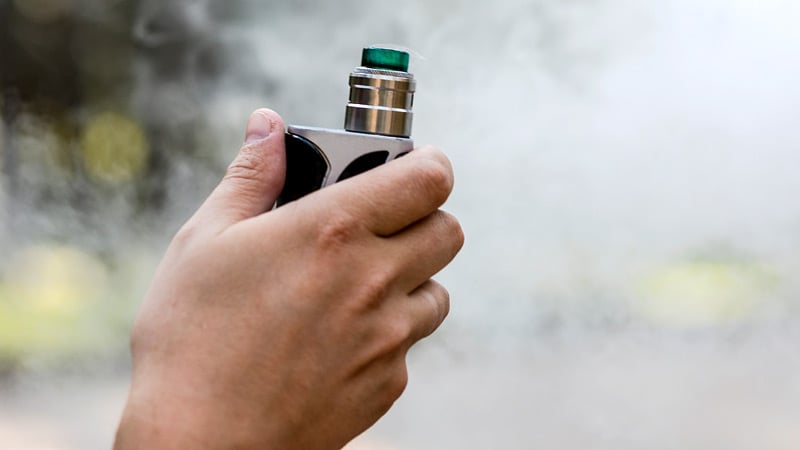Lung injuries from vaping probably result from direct toxicity or tissue damage caused by noxious chemical fumes, rather than from an accumulation of lipids in the lungs, pathology data suggest.
"We were not surprised by what we found, regarding toxicity," Brandon T. Larsen, MD, PhD, a surgical pathologist at the Mayo Clinic, Scottsdale, Arizona, and a national expert in lung pathology, said in a news release.
"We have seen a handful of cases, scattered individual cases, over the past two years where we've observed the same thing, and now we are seeing a sudden spike in cases. Our study offers the first detailed review of the abnormalities that may be seen in lung biopsies to help clinicians and pathologists make a diagnosis in an appropriate clinical context," Larsen said.
To learn more about the pathology of vaping-associated lung injury, Larsen and colleagues studied lung biopsy specimens from 17 patients (13 men; median age, 35 years) who reported vaping and who were suspected of having associated lung injuries. Two of the patients were from the Mayo Clinic, and the other patients were from elsewhere in the United States. Most (71%) of the patients vaped with marijuana or cannabis oils.
Larsen and colleagues' findings were published online October 2 in the New England Journal of Medicine.
All of the patients had bilateral pulmonary opacities; 15 of the patients presented in 2019.
All of the lung biopsy specimens revealed "patterns of acute lung injury, including acute fibrinous pneumonitis, diffuse alveolar damage, or organizing pneumonia, usually bronchiolocentric and accompanied by bronchiolitis," the authors explain.
Histologic findings were nonspecific, but all cases were characterized by foamy macrophages and pneumocyte vacuolization. Pigmented macrophages were sometimes seen, but these never predominated. There were often prominent neutrophils; eosinophils were seen rarely; and no granulomas were seen.
Bronchioloalveolar lavage fluid was available for two cases. They revealed "abundant foamy macrophages." Two patients who had diffuse alveolar damage died.
The researchers saw no histologic or radiologic evidence of tissue damage resulting from an accumulation of lipids such as mineral oils, which until now have been a suspected cause of vaping-linked lung injuries.
"While we can't discount the potential role of lipids, we have not seen anything to suggest this is a problem caused by lipid accumulation in the lungs. Instead, it seems to be some kind of direct chemical injury, similar to what one might see with exposures to toxic chemical fumes, poisonous gases and toxic agents," Larsen said in the news release.
More than 800 lung injury cases have been linked to vaping during the past several months, and at least 12 patients in 10 states have died. Investigators believe products that contain THC or other cannabis oils such as cannabidiol may be involved.
Some states have temporarily banned the sale of e-cigarettes or the flavored liquids used in the products, pending health investigations. The US Food and Drug Administration is considering banning all nontobacco-flavored vaping liquids. The Centers for Disease Control and Prevention cautions that children, young adults, pregnant women, and adults who don't currently use tobacco products should not use e-cigarettes, and the American Lung Association says e-cigarettes are not safe and can cause permanent lung injury and disease.
"Everyone should recognize that vaping is not without potential risks, including life-threatening risks, and I think our research supports that," Larsen warned. "It would seem prudent based on our observations to explore ways to better regulate the industry and better educate the public, especially our youth, about the risks associated with vaping."
"Although it is difficult to discount the potential role of lipid, we believe that the histologic changes instead suggest that vaping-associated lung injury represents a form of airway-associated lung injury represents a form of airway-centered chemical pneumonitis from one or more inhaled toxic substances rather than exogenous lipoid pneumonia as such, but the agents responsible remain unknown," the authors conclude.
Larsen has received personal fees from Paraxel and Veracyte outside of this study. One coauthor has received personal fees from Paraxel. The remaining coauthors have disclosed no relevant financial relationships.
N Engl J Med. Published online October 2, 2019. Full text
Follow Medscape on Facebook, Twitter, Instagram, and YouTube
